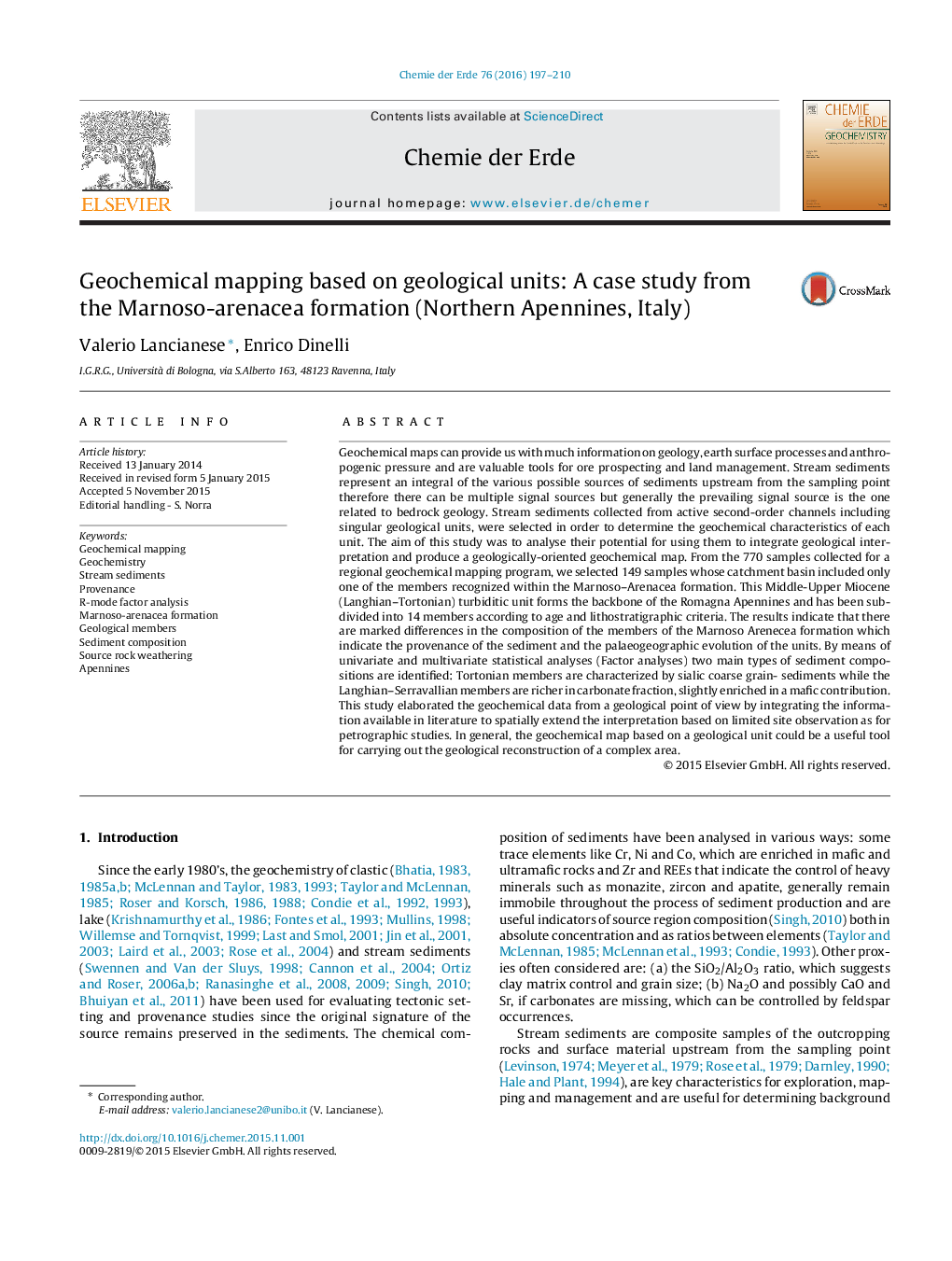| Article ID | Journal | Published Year | Pages | File Type |
|---|---|---|---|---|
| 4406779 | Chemie der Erde - Geochemistry | 2016 | 14 Pages |
Geochemical maps can provide us with much information on geology, earth surface processes and anthropogenic pressure and are valuable tools for ore prospecting and land management. Stream sediments represent an integral of the various possible sources of sediments upstream from the sampling point therefore there can be multiple signal sources but generally the prevailing signal source is the one related to bedrock geology. Stream sediments collected from active second-order channels including singular geological units, were selected in order to determine the geochemical characteristics of each unit. The aim of this study was to analyse their potential for using them to integrate geological interpretation and produce a geologically-oriented geochemical map. From the 770 samples collected for a regional geochemical mapping program, we selected 149 samples whose catchment basin included only one of the members recognized within the Marnoso–Arenacea formation. This Middle-Upper Miocene (Langhian–Tortonian) turbiditic unit forms the backbone of the Romagna Apennines and has been subdivided into 14 members according to age and lithostratigraphic criteria. The results indicate that there are marked differences in the composition of the members of the Marnoso Arenecea formation which indicate the provenance of the sediment and the palaeogeographic evolution of the units. By means of univariate and multivariate statistical analyses (Factor analyses) two main types of sediment compositions are identified: Tortonian members are characterized by sialic coarse grain- sediments while the Langhian–Serravallian members are richer in carbonate fraction, slightly enriched in a mafic contribution. This study elaborated the geochemical data from a geological point of view by integrating the information available in literature to spatially extend the interpretation based on limited site observation as for petrographic studies. In general, the geochemical map based on a geological unit could be a useful tool for carrying out the geological reconstruction of a complex area.
